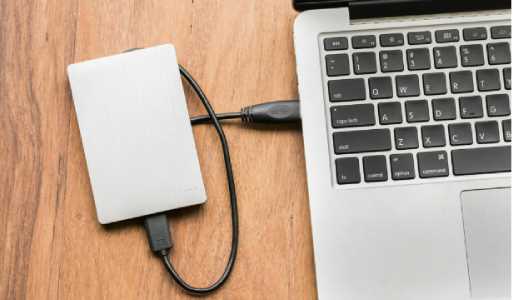When your computer fails to recognize an external hard drive, several factors could be at play. Follow these troubleshooting steps to address the issue:

- Check Physical Connections:
Ensure that the external hard drive is properly connected to your computer. Verify both the USB or other connection cable and the power supply if applicable. Try using a different cable or port to rule out connection issues. - Power Cycle the External Drive:
Power cycle the external hard drive by turning it off, unplugging it, waiting a few seconds, and then plugging it back in. Restart your computer after reconnecting the drive. - Device Manager (Windows) or System Information (Mac):
Check the device manager on Windows or System Information on Mac to see if the external hard drive is detected. Look for any error messages or warnings related to the external drive. If it appears, there may be driver issues. - Update or Reinstall Drivers:
Visit the manufacturer's website to download the latest drivers for your external hard drive. Alternatively, uninstall the existing drivers from the device manager and then reconnect the external drive to allow the system to reinstall the drivers. - Disk Management (Windows) or Disk Utility (Mac):
Open Disk Management on Windows or Disk Utility on Mac to check if the external hard drive is recognized but not assigned a drive letter or mount point. If so, assign a letter or mount the drive to make it accessible. - Test on Another Computer:
Connect the external hard drive to another computer to determine if the issue is specific to your computer or the drive itself. If the drive works on another system, the problem may be with your computer's USB ports or drivers. - USB Port and Cable Issues:
Try different USB ports on your computer, as a faulty port might be the cause. Additionally, test with a different USB cable to eliminate cable-related problems. - Power Supply Issues:
If your external drive requires an external power source, ensure it is receiving power. Faulty power supplies can prevent the drive from functioning correctly. - Virus or Malware Scan:
Run a comprehensive virus or malware scan on your computer. Malicious software can interfere with the recognition of external devices. - Partition and Format:
Use Disk Management (Windows) or Disk Utility (Mac) to check the partition status. If unallocated or not formatted, you may need to create a new partition and format the external hard drive. - Data Recovery Software:
If the drive is recognized but inaccessible, consider using data recovery software to retrieve important files before attempting any further troubleshooting that might involve formatting or partitioning.
If none of these steps resolve the issue, there may be a hardware problem with the external hard drive. Contact the manufacturer's support for further assistance or consider consulting a professional data recovery service if your data is critical.